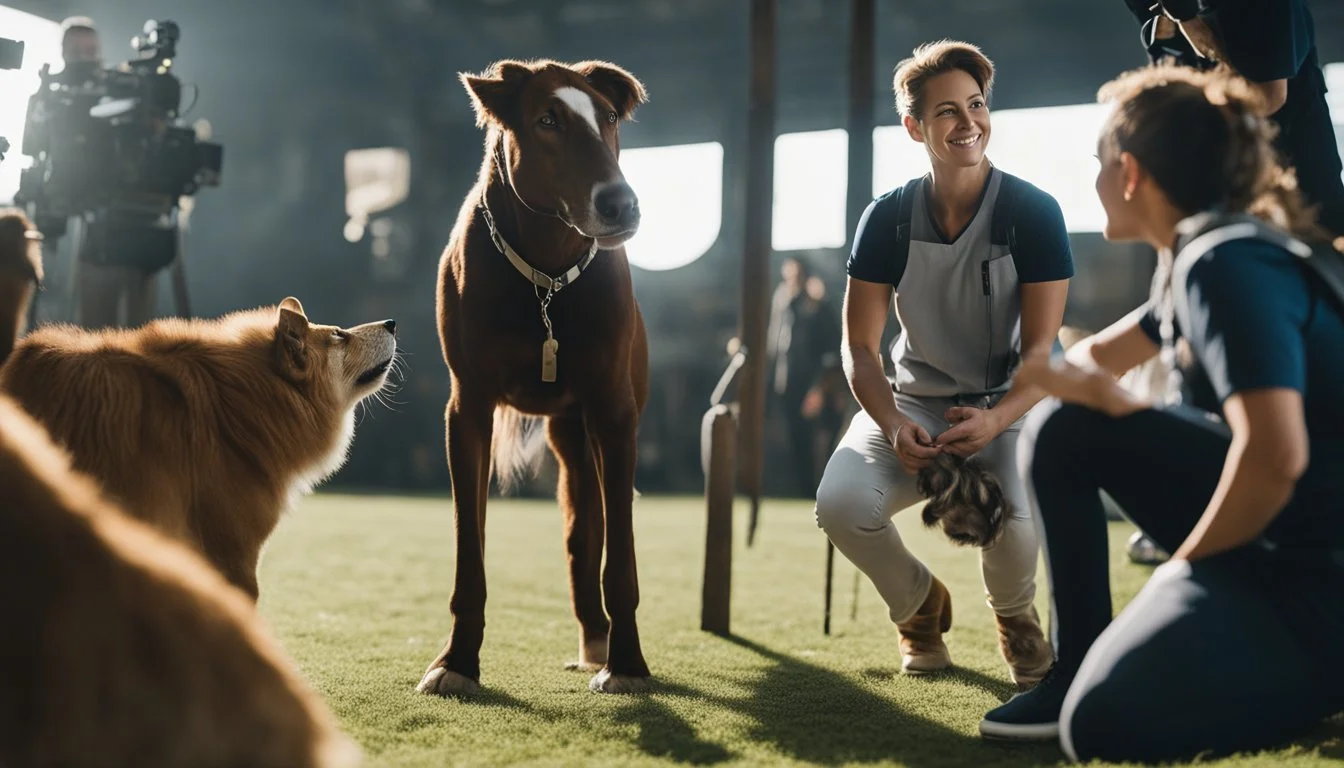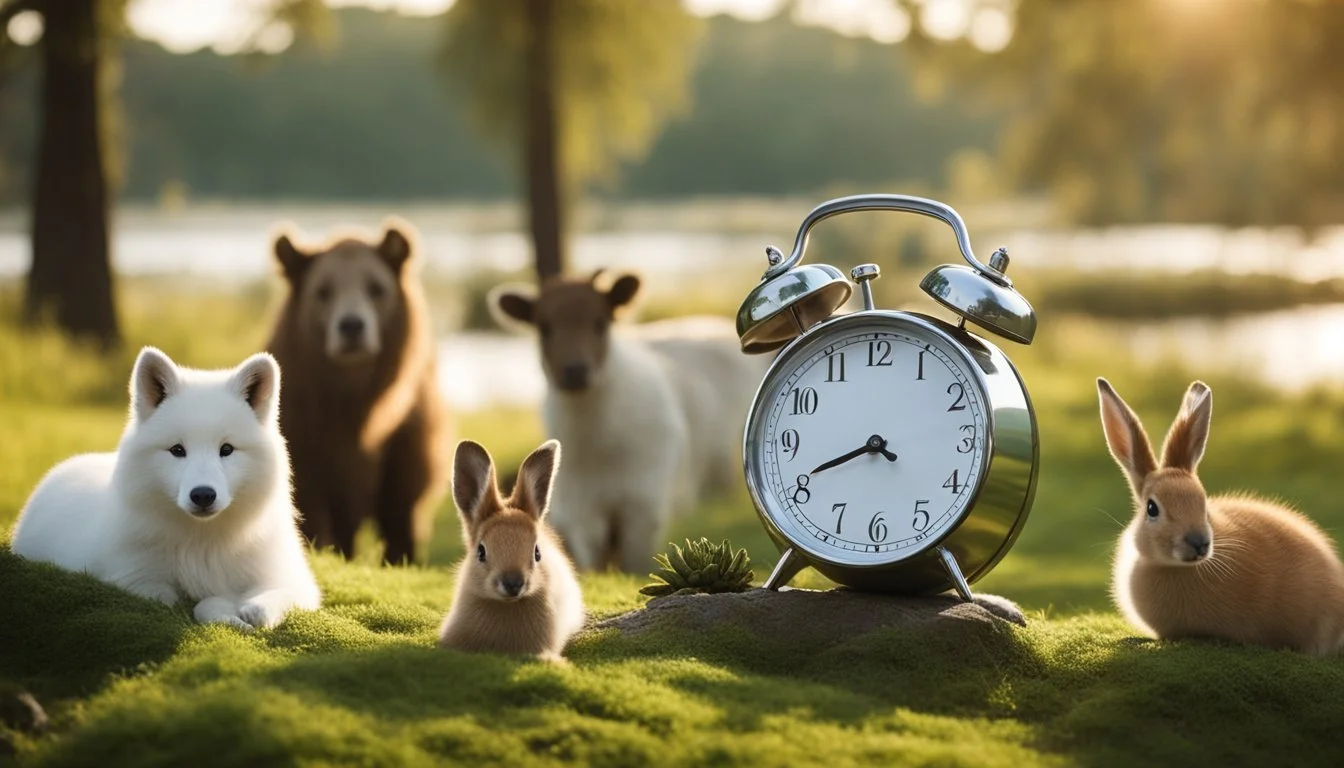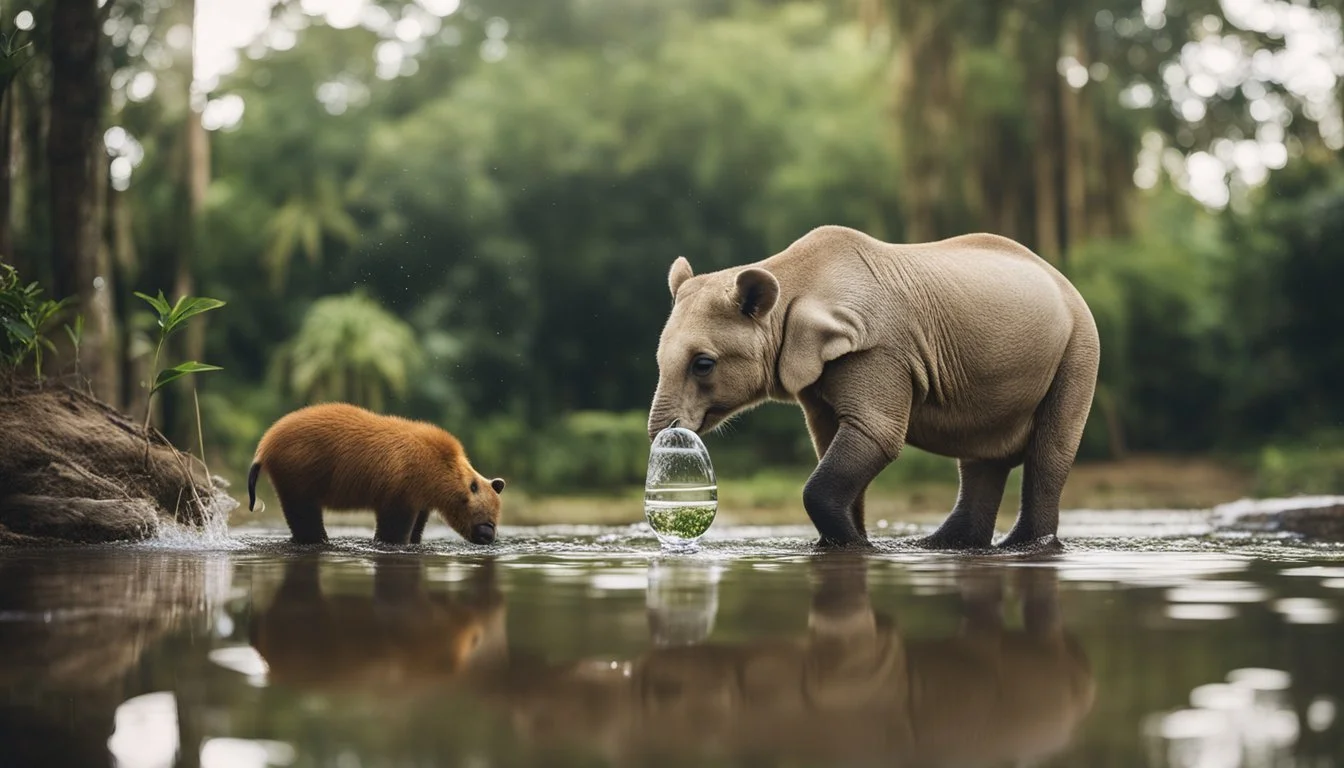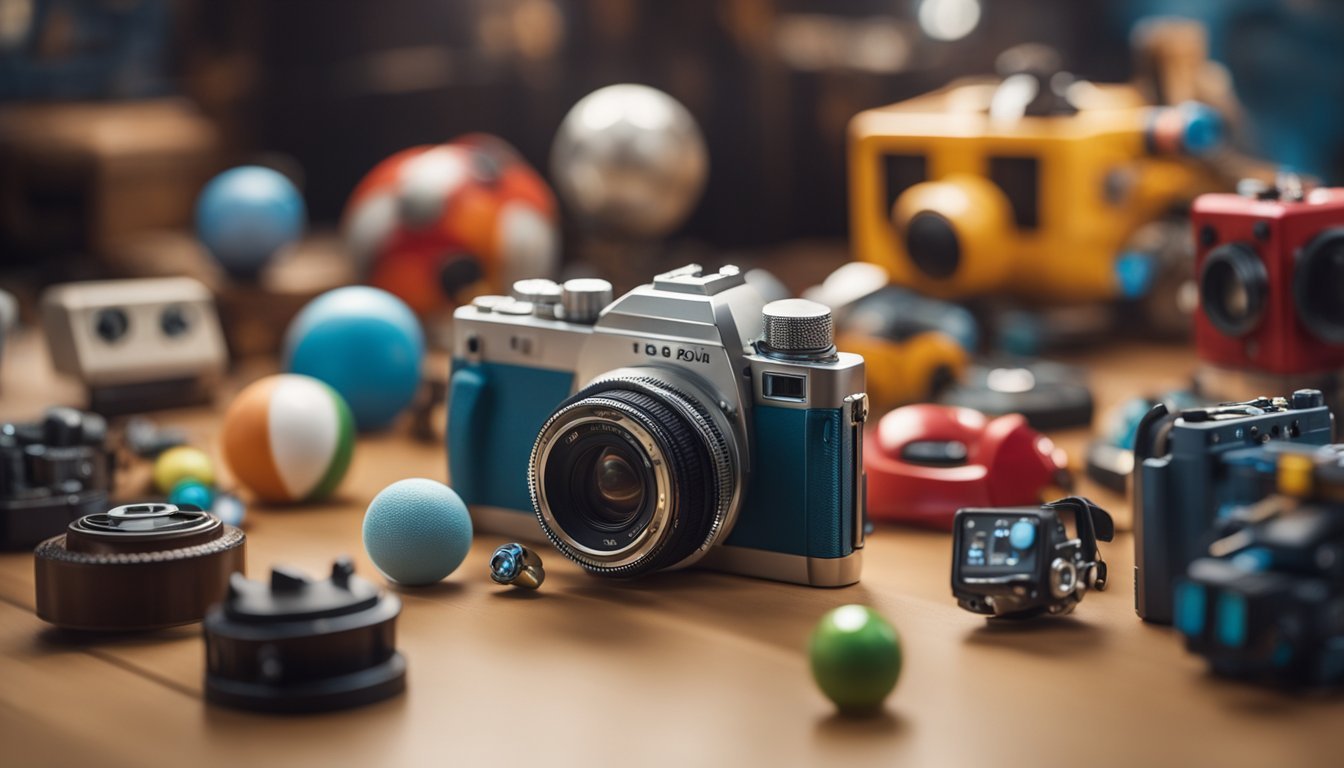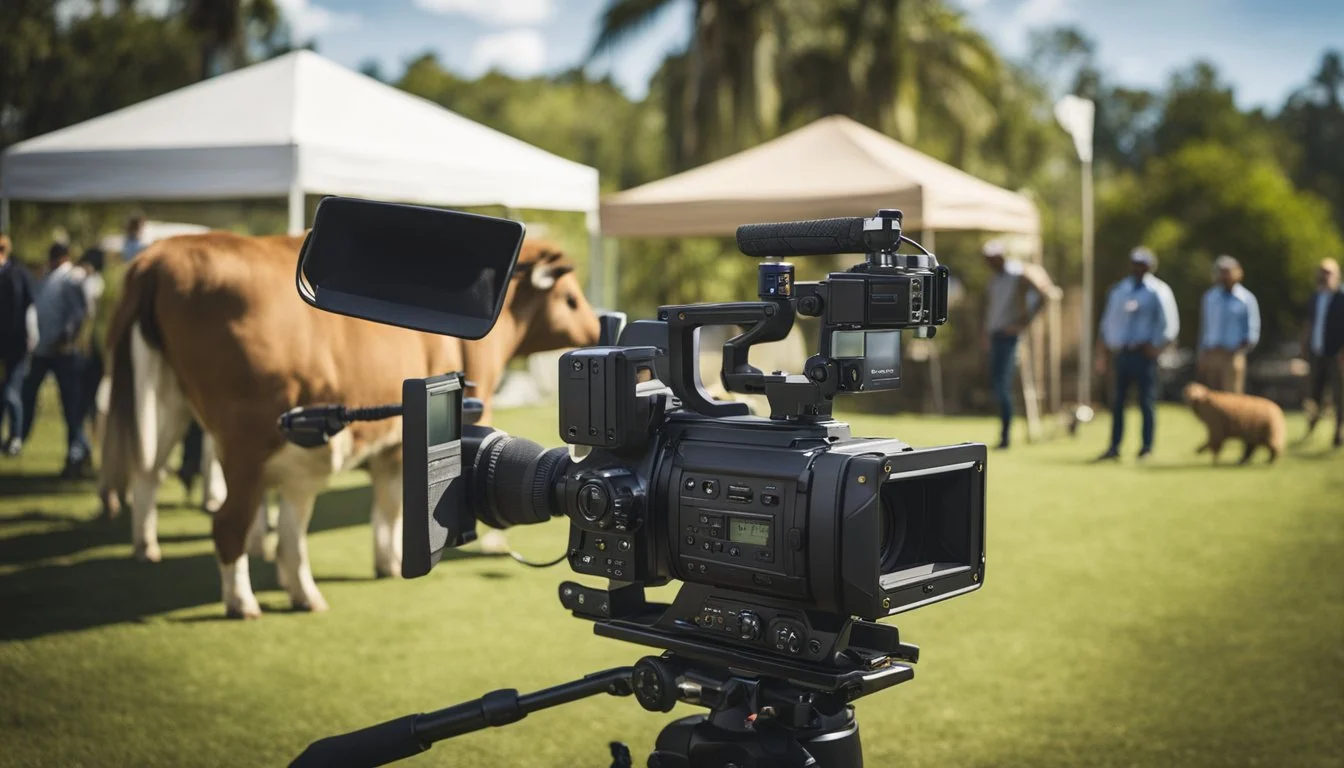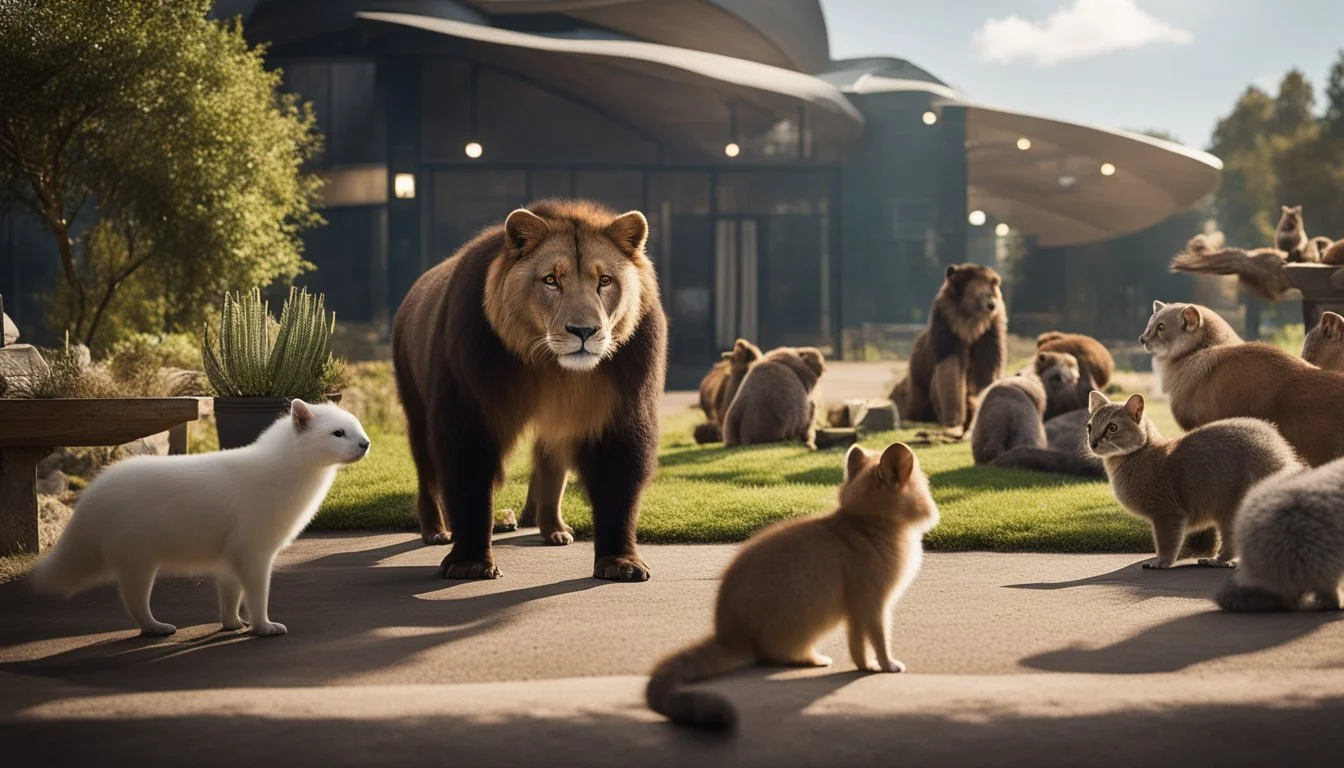17 Essential Tips for Working with Animals on Film Sets
Expert Guidance for Filmmakers
Working with animals on film sets presents a unique set of challenges and rewards that require careful planning and specialized knowledge. Filmmakers must address the animals' welfare and ensure their safety throughout production. This involves understanding their natural behaviors and needs to create a stress-free environment.
Effective collaboration with animal trainers and welfare organizations is crucial for successful animal performances. With a systematic approach, one can seamlessly integrate animals into the filming process while ensuring ethical practices are upheld. This article will guide you through essential tips and considerations for working with animals on film sets, helping you navigate this specialized aspect of filmmaking with confidence and care.
1) Build Trust with Animal Actors
Building trust with animal actors is crucial for a smooth and effective production.
Start by introducing the animal to both the cast and crew in a calm and controlled environment. This helps the animal become familiar with the people they'll be working with.
Spending consistent time with the animal off-set is important. Actors should engage in positive, non-threatening interactions with the animal to foster a bond.
Provide treats and positive reinforcement during these interactions. This encourages the animal to associate the cast and crew with positive experiences, building a sense of trust and security.
Maintain a consistent routine for the animal. Predictability helps reduce stress and makes the animal more comfortable in unfamiliar settings.
Observe the animal’s body language. Recognizing signs of stress or discomfort allows for timely interventions to maintain their well-being and trust.
Ensure the animal feels confident in its surroundings. Gradually introduce the animal to the set, allowing it to explore and become comfortable with the different elements.
Communicate clearly with the animal trainer. Use their expertise to better understand the animal’s needs and preferences, ensuring a cooperative working relationship.
By implementing these practices, filmmakers can create a trusting and harmonious relationship with their animal actors.
2) Utilize Professional Trainers
Utilizing professional trainers is crucial when working with animals on film sets. Trainers have the expertise to handle the unique challenges that arise, ensuring the safety and well-being of the animals involved.
These trainers communicate effectively with the crew and the animals, creating a seamless interaction. Their experience helps in managing the animals' natural behaviors, minimizing stress, and keeping the environment controlled.
Professional trainers know how to motivate animals with positive reinforcement. Using treats and praise, they can guide animals to perform specific actions, making scenes more natural and convincing.
Trainers also help in planning shots to accommodate the animals' needs. By understanding the animals' limits, they can suggest appropriate timeframes and setups, ensuring that the animals are comfortable throughout the shoot.
Involving professional trainers early in the production process is essential. They can provide valuable insights into the feasibility of certain scenes and offer practical solutions that align with the director's vision.
Their presence on set enhances the overall efficiency, allowing the crew to focus on capturing the perfect shot while ensuring the animals are handled with care and respect.
3) Respect Animal Timelines
Animals operate on their own schedules, and it's essential to be mindful of this when filming. Their comfort and well-being should always come first.
Film crews should allocate extra time in the production schedule specifically for the animals to acclimate to the set environment. This includes getting used to lights, cameras, and crew movements.
Each species has different needs. Dogs might need short breaks every hour, while more sensitive animals, like cats or rabbits, might require longer rest periods. Communicating with a skilled animal trainer can provide insights into the specific needs of each animal.
Expect the unexpected. Animals can be unpredictable, and patience is key. Filmmakers must be prepared to adapt their plans to accommodate the animals' needs, ensuring their experience is as stress-free as possible.
4) Use Positive Reinforcement
Positive reinforcement is a critical tool when working with animals on film sets. It ensures the animal associates the filming environment with positive experiences, making them more comfortable and cooperative.
Rewarding desired behaviors with treats or praise encourages animals to repeat those actions. This can make filming smoother and more efficient.
Trainers should use consistent signals and rewards to build trust with the animals. This consistency helps the animal understand what is expected of them.
Using positive reinforcement reduces stress for the animal. It can improve the animal's performance and well-being, leading to better overall results for the film crew.
By focusing on training techniques that prioritize positive reinforcement, film crews can create a safer and more effective filming environment for everyone involved.
5) Keep a Calm Environment
Maintaining a calm environment on set is crucial when working with animals. They are highly sensitive to their surroundings and can become easily stressed by loud noises or chaotic activity.
Limiting unnecessary movements and maintaining a quiet atmosphere can help the animals feel more secure. This can make them more cooperative during filming.
Controlling the noise level is essential. Any sudden or loud sounds should be minimized to avoid startling the animals. This includes voices, equipment, and external noises.
Creating a consistent and familiar environment can also help. Allowing the animals time to acclimate to the set and the equipment can reduce anxiety.
Respect for the animals' space and comfort is key. Ensuring that their enclosures and resting areas are safe and serene can improve their overall well-being and performance on set.
6) Have a Veterinary On-site
Having a veterinary professional on-site is crucial when filming with animals. A vet can quickly address any medical issues, ensuring the well-being of the animals.
The presence of a vet helps monitor the animals' health throughout the filming process. This reduces stress and prevents potential health complications.
A vet can collaborate with the film crew to create a safe environment. They ensure that the animals are not exposed to harmful conditions or undue stress.
Having a vet also ensures that any emergencies are promptly addressed. This prevents delays in filming and maintains a smooth workflow.
In addition, a vet can provide expert advice on the best ways to handle animals during scenes. Their experience helps enhance the animal’s performance while keeping them comfortable and safe.
A veterinary presence assures the film crew and cast that the welfare of the animals is a priority. It fosters a compassionate working environment for everyone involved.
7) Prepare Contingency Plans
When working with animals on film sets, unpredictable situations can occur. It's crucial to have contingency plans to address unexpected issues smoothly.
One approach is to prepare alternative scenes or actions. These can be used if an animal is uncooperative or unable to perform as planned. This flexibility ensures that the production stays on schedule.
Communication with animal trainers is vital. They can provide insights into an animal’s behavior and help devise backup plans that are practical and stress-free for the animal.
Creating a calm environment is also essential. An animal might become anxious or distracted by sudden changes or noises. Having a quiet space where the animal can relax can be part of the contingency strategy.
Finally, keep essential supplies on hand, such as extra treats and familiar toys, to maintain the animal’s comfort and cooperation.
8) Limit Working Hours
When working with animals on a film set, it is crucial to limit their working hours. Prolonged exposure to stressful environments can negatively impact their health and well-being.
Allow for regular breaks to mitigate stress. Even small breaks can make a significant difference in keeping animals comfortable.
Consult with animal trainers and handlers to determine the appropriate work duration for each species. Different animals have different tolerance levels.
Ensure that the shooting schedule accommodates the animal's needs. Flexibility in scheduling can help in managing their energy levels effectively.
Always monitor the animal's behavior for signs of stress or fatigue. Immediate adjustments should be made if the animal shows signs of distress.
By limiting working hours, filmmakers can ensure a humane and productive set for all involved.
9) Ensure Proper Hydration
Keeping animals hydrated on set is essential for their well-being. Always provide fresh water accessible throughout the day.
Animals can become dehydrated quickly, especially under hot or bright lighting. Regular water breaks should be scheduled.
Monitor the animal's water intake. Signs of dehydration include a dry nose, sunken eyes, and lethargy. If these symptoms appear, consult with a veterinarian immediately.
Ensuring hydration isn't just about water. Sometimes, adding electrolytes can help maintain their balance, especially during long hours of filming. Proper hydration reduces stress and keeps the animal comfortable.
Carefully consider how the water is offered. Use bowls that are easy for the animal to access and ensure they're clean. Regularly check the temperature of the water, particularly in extreme weather conditions.
Understand that different animals have varying hydration needs. Consult with trainers or animal consultants to determine the specific requirements for each species on set.
10) Understand Animal Behavior
Understanding animal behavior is crucial when working with animals on film sets. Each species has unique characteristics, patterns, and temperaments. By recognizing these traits, filmmakers can anticipate actions and reactions, which helps in capturing the desired shots more effectively.
Different animals respond to their environment in specific ways. Dogs, for example, are generally easy to work with due to their familiar nature with humans. On the other hand, animals like mice can be more unpredictable.
Working with an animal behaviorist or trainer can provide valuable insights. They can interpret subtle cues and manage the animal's stress levels, ensuring a safer and more productive set.
Patience is essential. Animals might need time to adjust to the surroundings, including the presence of cameras and crew. Giving them this time can lead to more natural and compelling performances.
Knowledge of animal behavior also aids in creating a safer environment for both the crew and the animals. Understanding when an animal is stressed or uncomfortable allows for timely interventions and adjustments to the setup.
Finally, keeping a calm and controlled set is beneficial. Animals are sensitive to loud noises and abrupt movements. A quiet and stable environment helps in maintaining their focus and reducing unnecessary stress.
11) Provide Familiar Toys
Using familiar toys can help animals feel more comfortable on set.
These toys can serve as a distraction and a comfort object, making the environment less stressful for them.
It's important to ensure that the toys are clean and safe for the animal to use.
Familiar toys can also engage the animal's attention and keep them entertained during downtime.
Incorporating these toys into scenes can promote a natural and relaxed performance from the animal.
Make sure the toys are easily accessible and stored in a designated area on set.
12) Avoid Loud Noises
Ensuring a quiet environment on set is crucial when working with animals. Loud noises can startle and stress animals, making it challenging to capture the desired performance.
Crew members should speak in low tones and avoid sudden, loud outbursts. Equipment should be handled gently to minimize noise.
Using sound-dampening materials around the set can further reduce unwanted noise. Carpets and padded barriers are effective in creating a tranquil filming environment.
It's important to inform everyone involved in the production about the noise sensitivity of the animals. Clear communication helps maintain a calm atmosphere.
When using technical equipment, operators should check for any unexpected sounds that might arise. Adjustments to reduce mechanical noise are often necessary.
Careful planning and preparation can ensure that the set remains a peaceful space, allowing animal performers to stay relaxed and focused on their tasks.
13) Implement Safety Protocols
Ensuring safety on a film set is essential when working with animals. Specific safety protocols must be in place to protect both the humans and animals involved.
Conduct a thorough risk assessment prior to shooting. This helps identify potential hazards and determine measures to mitigate them.
Daily safety meetings should be a standard practice. These meetings ensure everyone is aware of the day's safety procedures and any potential risks.
Have a written illness and injury prevention policy. This policy should outline the steps to be taken if an accident or injury occurs.
Ensure that appropriate personnel, such as animal handlers and veterinary staff, are present on set. Their expertise is crucial in maintaining a safe environment.
Provide clear communication between the film crew and animal trainers. This helps in coordinating movements and managing any unexpected situations.
Keeping safety protocols updated and regularly training staff on these measures can significantly reduce the risk of accidents on set.
Protective equipment and barriers should be used when necessary to ensure the safety of both animals and crew members.
By implementing these safety protocols, the film set can operate smoothly and securely, allowing for a successful production.
14) Use Visual Cues
Visual cues are essential when working with animals on film sets. Animals respond well to hand signals and other non-verbal commands. Trainers often use these cues to guide animals' behavior without disrupting the scene.
Clear and consistent hand signals help animals understand what is expected of them. This consistency reduces confusion and promotes effective communication between trainers and animals.
Visual cues should be simple and distinct. Complex or subtle signals can be easily misunderstood by animals. It is important for every member of the crew to be aware of these cues to avoid accidentally giving conflicting signals.
Using visual cues effectively also involves practice. Animals need time to learn and become comfortable with the signals. Regular rehearsal reinforces their understanding and responsiveness.
In addition to trainers, actors may also need to learn and use specific cues. This can help maintain the animal's focus and perform as directed during filming.
15) Minimize Human Interaction
Minimizing human interaction with animals on set is essential to reducing their stress and ensuring their safety.
By limiting contact, animals are less likely to feel overwhelmed by unfamiliar human activities.
Trainers or handlers should be the primary individuals interacting with the animals. This approach allows animals to stay calm and focused.
Non-essential staff should maintain a distance from the animals to avoid creating distractions.
Using barriers or designated off-limit areas can help enforce this practice.
Implementing these measures contributes to a smoother, safer filming environment for both the animals and the crew.
16) Offer Rest Periods
It's vital to provide animals with regular rest periods on set. Filming can be demanding, and animals can become easily fatigued or stressed. Short, frequent breaks help maintain their well-being and performance.
Rest periods also aid in preventing overexertion, especially during long shoots. Ensuring animals get downtime reduces the risk of health issues and stress-related behaviors.
Trainers and handlers should monitor the animals closely. Recognizing signs of fatigue early allows for timely breaks, keeping the animals comfortable and ensuring their cooperation throughout the shoot.
Adequate rest periods contribute to a smoother, more efficient filming process, benefiting both the animals and the production team. Maintaining this balance is key to successful animal performances on set.
17) Use Natural Settings
Using natural settings can greatly enhance the believability and comfort of animal performances on film sets.
Animals generally feel more at ease in environments that resemble their natural habitats.
Setting up scenes in such locations helps reduce stress and can lead to more genuine behaviors.
When creating natural settings, attention should be paid to details like vegetation, lighting, and terrain.
These elements can make the scene appear more authentic and provide the animals with familiar cues.
Filmmakers should be mindful of the type of animal being filmed and ensure the settings are appropriate for their specific needs.
Using natural settings also minimizes the need for excessive set dressing and artificial props, which can be distracting for animals.
It allows for a more fluid and spontaneous filming process, capturing organic interactions.
Incorporating natural elements can reduce the reliance on digital effects, leading to cost savings and enhanced visual authenticity.
Care should be taken to preserve the integrity of the natural site, ensuring there’s no harm done to the environment or the wildlife.
Having a professional animal trainer who understands the animal's natural behavior can help optimize these settings for filming purposes.
Using natural settings can make a significant difference in both the animal's well-being and the film's overall quality.
By creating a more comfortable environment, directors can capture spectacular and believable performances from their animal actors.
Importance of Animal Welfare on Film Sets
Ensuring animal welfare on film sets is crucial to maintaining ethical standards and promoting a safe environment for both the animals and the crew. Proper understanding of animal behavior and implementing strict safety measures are key components.
Understanding Animal Behavior
Understanding animal behavior is essential for a smooth and humane filming process. Each species has distinct behaviors, stress responses, and needs. Recognizing these differences helps in creating a supportive environment for the animals.
Trainers and handlers play a pivotal role in this aspect. They are experts in interpreting signs of stress or discomfort in animals, allowing for timely interventions. Proper acclimatization to the set can reduce anxiety and improve performance. Pre-production meetings with the animal handlers can clarify specific requirements and restrictions for different animals, ensuring preparedness.
Additionally, knowing the natural instincts and habits of the animals can help filmmakers design scenes that accommodate these characteristics. This reduces the likelihood of inadvertently causing distress or harm to the animal actors.
Safety Precautions
Safety precautions are essential to safeguard the well-being of animals on set. This includes detailed risk assessments and planning to mitigate potential dangers. Safe transportation, secure housing, and appropriate rest periods are fundamental aspects of animal care.
Creating a safe environment involves setting boundaries to keep animals away from hazards. This might include physical barriers, as well as ensuring that equipment and props are not dangerous or intimidating to the animals. On-set veterinarians should be available to address any health concerns immediately.
Furthermore, clear communication among the crew about the animal’s needs and limits is critical. This ensures everyone is aware of best practices when interacting with the animals. Using positive reinforcement techniques can also enhance the animals' comfort and cooperation during filming.
Legal and Ethical Considerations
When working with animals on film sets, it's crucial to adhere to legal standards and prioritize ethical training practices. This ensures the well-being of the animals and compliance with relevant laws.
Compliance with Animal Rights Laws
Filmmakers must comply with animal rights laws to ensure the humane treatment of animals on set. These rules vary by region.
In the United States, the American Humane Association enforces guidelines that must be followed. These include providing adequate housing, food, and water.
State laws may also dictate specific standards. For instance, Maine has strict regulations against cruelty during production. Filmmakers found guilty could face significant penalties.
Partnering with animal welfare organizations can help navigate these legal requirements. It also ensures that all legal boxes are ticked and the animals are protected.
Ethical Training Practices
Ethical training practices are essential for minimizing stress and ensuring safety. Trainers must use positive reinforcement techniques.
Animals should be given time to acclimate to sets and camera equipment. This familiarization process reduces anxiety and helps the animals to perform naturally.
Moreover, creating a supportive environment is key. This includes working with experienced animal trainers who understand the specific needs of each species. By focusing on these ethical practices, filmmakers can achieve better performances and ensure the well-being of the animals involved.
Coordination and Communication
Clear coordination and robust communication are crucial for ensuring the safety and effectiveness of working with animals on set. This includes collaborating with skilled animal trainers and implementing effective communication strategies.
Working with Animal Trainers
Involving experienced animal trainers is vital. Trainers understand the unique behaviors and needs of each species. They can help design scenes and stunts that are safe and achievable.
Trainers should be part of the pre-production process. Their insights can shape the script and shooting schedule. Regular consultation is essential to address any concerns about the animals' welfare.
Providing enough preparation time for trainers and animals reduces stress. Familiarizing the animals with the set and equipment can improve their comfort and performance.
Effective Communication Strategies
Communication lines between the director, crew, and trainer must remain open. Detailed briefings before each shoot help clarify expectations and tasks. Discussing signals and cues used by trainers ensures everyone knows how to interact with the animals.
Using hand signals, whistles, or clickers can guide animal actions smoothly. Keeping distractions to a minimum by limiting noise and movement also helps maintain control.
Update all team members on any changes to the plan. Continuous feedback between the team and the trainer supports real-time adjustments, enhancing the quality of the footage captured.


